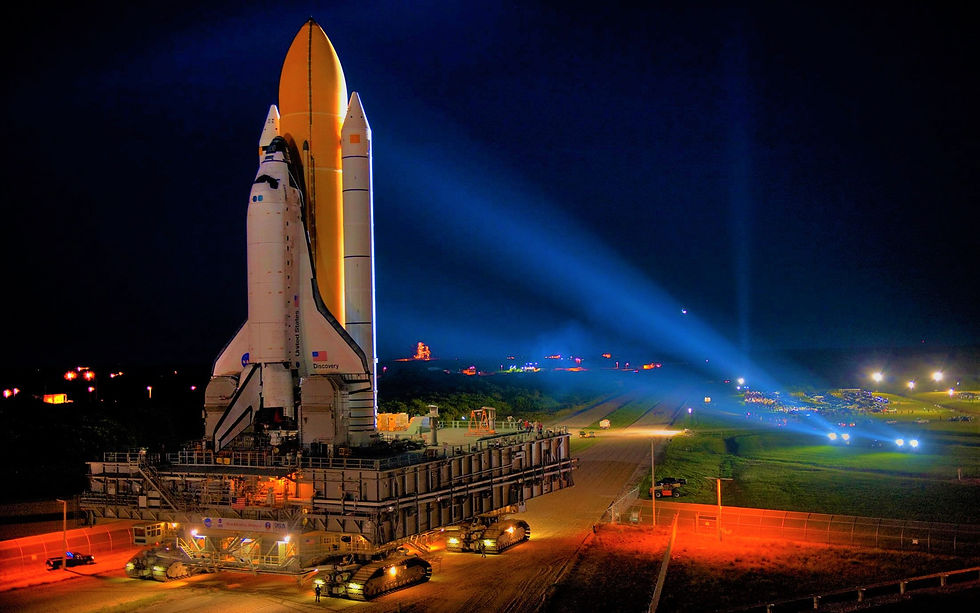James Webb
- pilot55kassas55
- 20 يوليو 2022
- 4 دقيقة قراءة
The James Webb Space Telescope (JWST) is a space telescope designed primarily to conduct infrared astronomy. As the largest optical telescope in space, its greatly improved infrared resolution and sensitivity allow it to view objects too old, distant, or faint for the Hubble Space Telescope. This is expected to enable a broad range of investigations across the fields of astronomy and cosmology, such as observation of the first stars and the formation of the first galaxies, and detailed atmospheric characterization of potentially habitable exoplanets.
The U.S. National Aeronautics and Space Administration (NASA) led JWST's development in collaboration with the European Space Agency (ESA) and the Canadian Space Agency (CSA). The NASA Goddard Space Flight Center (GSFC) in Maryland managed telescope development, the Space Telescope Science Institute in Baltimore on the Homewood Campus of Johns Hopkins University operates JWST, and the prime contractor was Northrop Grumman. The telescope is named after James E. Webb, who was the administrator of NASA from 1961 to 1968 during the Mercury, Gemini, and Apollo programs.
The James Webb Space Telescope was launched on 25 December 2021 on an Ariane 5 rocket from Kourou, French Guiana, and arrived at the Sun–Earth L2 Lagrange point in January 2022. The first image from JWST was released to the public via a press conference on 11 July 2022. The telescope is the successor of the Hubble as NASA's flagship mission in astrophysics.

James Webb Orbit
JWST operates in a halo orbit, circling around a point in space known as the Sun–Earth L2Lagrange point, approximately 1,500,000 km (930,000 mi) beyond Earth's orbit around the Sun. Its actual position varies between about 250,000 and 832,000 km (155,000–517,000 mi) from L2 as it orbits, keeping it out of both Earth and Moon's shadow. By way of comparison, Hubble orbits 550 km (340 mi) above Earth's surface, and the Moon is roughly 400,000 km (250,000 mi) from Earth. Objects near this Sun–Earth L2 point can orbit the Sun in synchrony with the Earth, allowing the telescope to remain at a roughly constant distance, with continuous orientation of its unique sunshield and equipment bus toward the Sun, Earth and Moon. Combined with its wide shadow-avoiding orbit, the telescope can simultaneously block incoming heat and light from all three of these bodies and avoid even the smallest changes of temperature from Earth and Moon shadows that would affect the structure, yet still maintain uninterrupted solar power and Earth communications on its sun-facing side. This arrangement keeps the temperature of the spacecraft constant and below the 50 K (−223 °C; −370 °F) necessary for faint infrared observations.

Images
NASA’s James Webb Space Telescope has produced the deepest and sharpest infrared image of the distant universe to date. Known as Webb’s First Deep Field, this image of galaxy cluster SMACS 0723 is overflowing with detail.
Thousands of galaxies – including the faintest objects ever observed in the infrared – have appeared in Webb’s view for the first time. This slice of the vast universe covers a patch of sky approximately the size of a grain of sand held at arm’s length by someone on the ground.

The dimmer star at the center of this scene has been sending out rings of gas and dust for thousands of years in all directions, and NASA’s James Webb Space Telescope has revealed for the first time that this star is cloaked in dust.
Ring Nebula

This landscape of “mountains” and “valleys” speckled with glittering stars is actually the edge of a nearby, young, star-forming region called NGC 3324 in the Carina Nebula. Captured in infrared light by NASA’s new James Webb Space Telescope, this image reveals for the first time previously invisible areas of star birth.
Called the Cosmic Cliffs, Webb’s seemingly three-dimensional picture looks like craggy mountains on a moonlit evening. In reality, it is the edge of the giant, gaseous cavity within NGC 3324, and the tallest “peaks” in this image are about 7 light-years high. The cavernous area has been carved from the nebula by the intense ultraviolet radiation and stellar winds from extremely massive, hot, young stars located in the center of the bubble, above the area shown in this image.

Stephan’s Quintet, a visual grouping of five galaxies, is best known for being prominently featured in the holiday classic film, “It’s a Wonderful Life.” Today, NASA’s James Webb Space Telescope reveals Stephan’s Quintet in a new light. This enormous mosaic is Webb’s largest image to date, covering about one-fifth of the Moon’s diameter. It contains over 150 million pixels and is constructed from almost 1,000 separate image files. The information from Webb provides new insights into how galactic interactions may have driven galaxy evolution in the early universe.
With its powerful, infrared vision and extremely high spatial resolution, Webb shows never-before-seen details in this galaxy group. Sparkling clusters of millions of young stars and starburst regions of fresh star birth grace the image. Sweeping tails of gas, dust and stars are being pulled from several of the galaxies due to gravitational interactions. Most dramatically, Webb captures huge shock waves as one of the galaxies, NGC 7318B, smashes through the cluster.





تعليقات